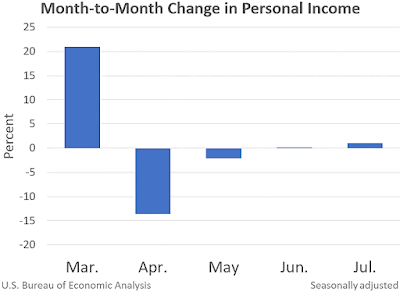Consumer Confidence Index (CCI) for August 2021
================
Predicted: 125.0
- Actual: 113.8
================
Previous Month (revised): 125.1
- Change from Previous Month: -9.033% (-11.3 point)
The "predicted" figure is what economists were expecting, while the "actual" is the true or real figure.
From Today's Report:
"...'Consumer confidence retreated in August to its lowest level since February 2021 (95.2),' said Lynn Franco, Senior Director of Economic Indicators at The Conference Board. 'Concerns about the Delta variant -- and, to a lesser degree, rising gas and food prices -- resulted in a less favorable view of current economic conditions and short-term growth prospects. Spending intentions for homes, autos, and major appliances all cooled somewhat; however, the percentage of consumers intending to take a vacation in the next six months continued to climb. While the resurgence of COVID-19 and inflation concerns have dampened confidence, it is too soon to conclude this decline will result in consumers significantly curtailing their spending in the months ahead..."
Every month, The Conference Board sends a questionnaire to 5,000 U.S. households. Survey participants are polled about their feelings regarding the U.S. economy, current and future, and about their own fiscal circumstances. On average, 3,500 participants complete and return the 5-question survey.
- The baseline "100" score for the CCI is associated with 1985 survey data.
When consumers feel good about the economy, they tend to do more spending, and vice versa.
Based in New York City, The Conference Board is a private, not-for-profit organization with a mission to, "create and disseminate knowledge about management and the marketplace to help businesses strengthen their performance and better serve society."
The CCI is usually released on the last Tuesday of the month.
================
Labels: cci, Conference_Board, consumer_confidence, consumers, Coronavirus, COVID-19, COVID19, Pandemic, soft_data, The_Conference_Board
|
--> www.FedPrimeRate.com Privacy Policy <--
CLICK HERE to JUMP to the TOP of THIS PAGE > SITEMAP < |



















